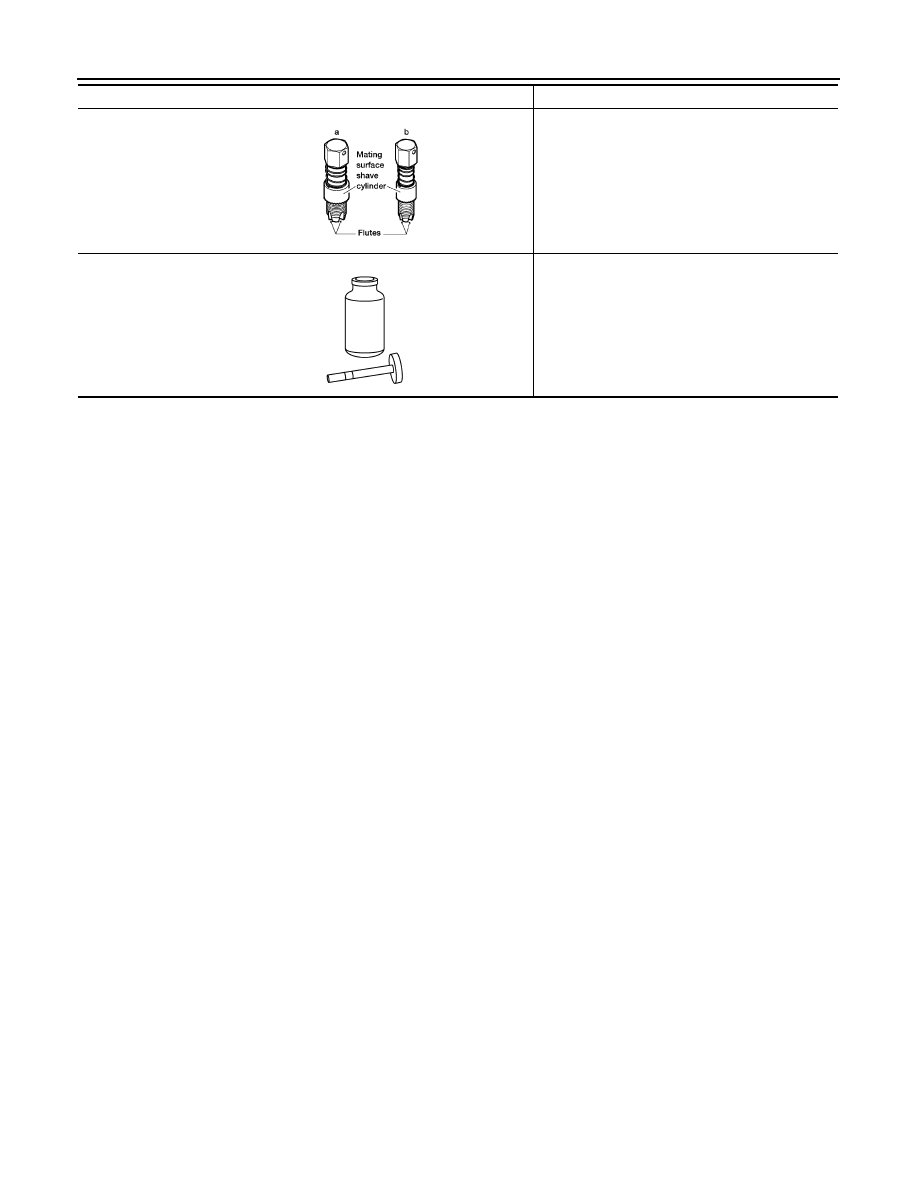содержание .. 594 595 596 597 ..
Nissan Tiida C11. Manual - part 596

EC-1034
< PREPARATION >
[MR18DE]
PREPARATION
Oxygen sensor thread
cleaner
Reconditioning the exhaust system threads before
installing a new oxygen sensor. Use with anti-
seize lubricant shown below.
a: 18 mm diameter with pitch 1.5 mm for Zirco-
nia Oxygen Sensor
b: 12 mm diameter with pitch 1.25 mm for Tita-
nia Oxygen Sensor
Anti-seize lubricant
i.e.: (Permatex
TM
133AR or equivalent
meeting MIL specifica-
tion MIL-A-907)
Lubricating oxygen sensor thread cleaning tool
when reconditioning exhaust system threads.
Tool name
Description
AEM488
S-NT779